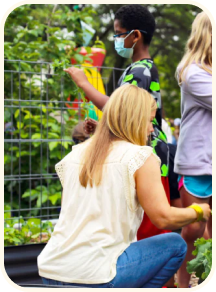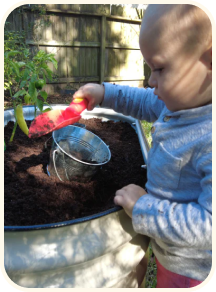How to Grow Lemon Balm
While not as popular as other herbs, lemon balm is easy to grow with a variety of culinary and medicinal uses. A member of the mint family, lemon balm is a perennial herb native to Europe and Asia. Used as far back as the Middle Ages, lemon balm is popular in aromatherapy and is used to treat anxiety, stress and insomnia. It is commonly added to chicken, fish, teas, and desserts to lend a fresh, citrus flavor. Dried leaves can be used in teas, soups, flavorings, and for medicinal purposes.
BASIC INFORMATION
|
Scientific Name |
Melissa officinalis |
|
Common Name |
Lemon Balm |
|
Sun Exposure |
Full sun to partial shade |
|
Soil Type |
Rich, moisture-retentive soil |
|
Soil pH |
6.5 – 7 |
|
Bloom Time |
Throughout summer and into fall |
|
Flower Color |
Small white flowers in tight clusters |
|
Hardiness Zones |
3 – 7, does not like hot, humid climates |
You might be wondering what are the benefits of lemon balm. Below are some benefits to incorporating lemon balm into your life, evidenced by several studies. While more research is needed to validate those findings, lemon balm has undoubtedly helped many people improve their lives.
- Reduces anxiety & stress – Lemon balm can help alleviate the effects of anxiety and stress. Many who use lemon balm have reported this positive result.
- Helps ease insomnia – Several studies have shown that when combined with other herbs such as valerian, it has a soothing and calming effect that promotes sleep. In a study of people with minor sleep problems, 81% that took a combination of valerian and lemon balm reported better sleeping than those that took a placebo.
- Improves cognitive function & focus – A study on the effects of lemon balm in improving cognitive function found that the participants who took lemon balm experienced an improvement in mood and ability to focus.
- Anti-inflammatory – Inflammation is detrimental and can trigger pain in the body. Lemon balm has been shown to reduce inflammation levels.
- Anti-Cancer effects – Lemon balm has been shown to kill brain cancer cells in a cell-based study. It also has prevented the growth of certain types of breast, liver, and leukemia cancer cells.
Growing Lemon Balm

When: Lemon balm is a cool-weather crop that can be transplanted early spring to summer after all danger of frost has passed. It can also be grown from seed in early fall to late winter. Although lemon balm can grow in a variety of soils, it prefers sandy, well-drained soil rich in organic matter. The only soil it will not grow in are those with a heavy clay content.
Where: Lemon balm should be grown in raised containers as they can become invasive and get quite large if left unchecked. Vego Garden has an herb garden series where you can grow lemon balm along with a variety of herbs. In addition to outside, lemon balm can also be planted in pots and containers indoors. When selecting a container or pot, make sure it has adequate drainage holes to minimize the roots becoming waterlogged, which can lead to root rot.
If planted indoors, lemon balm will require significantly more sunlight than those growing outdoors, which can tolerate partial shade. Place lemon balm plants near a window sill that gets 5 to 6 hours of direct sunlight. If you notice your plant turning brown, periodically rotate it to prevent it from burning.
The pleasant scent of lemon balm attracts bees and other beneficial pollinators while repelling unwelcome pests including gnats and mosquitos. It can be planted next to most vegetables and herbs, including squash, tomatoes, onions, basil, rosemary, and sage. If you are seeking to deter pests, plant it next to marigolds, daisies, asters, lavender, and mint.
How: Space lemon balm plants 12 – 18 inches apart in the garden. To grow lemon balm seeds in pots, prepare seed starting trays filled with seed starting mix. Sprinkle several seeds per pot, planting them ¼ in deep. Water the seeds in. The seeds will take 14 days to germinate if the temperature is kept at 70°F, and longer if the temperatures are cooler.
Once the seedlings have developed their second set of true leaves, thin to one plant per tray. As they grow, you can transplant them to larger containers. Before transplanting, consider hardening off seedlings by placing them outside for a few hours each day. The process for growing in the ground is similar, except that the soil needs to be well-amended with organic matter to ensure a well-draining foundation. Water immediately after planting.
You can also propagate lemon balm through cuttings, which is a more reliable method. Cut off a section that is approximately 4 inches long just above a leaf node. Remove the leaves on the lower two-thirds of the stem. Place the cutting in a jar of filtered water or spring water in an area with indirect sunlight. Change the water every few days until you see root growth. When the roots are 1 to 2 inches long, you can plant the cuttings in a pot. Place the pot in a place where it will get direct sunlight.

Care: Lemon balm is a sturdy herb that does not require much maintenance. It benefits from regular, even watering, with the soil kept slightly moist. More established plants can tolerate drought. When growing in high temperatures, water at least once a week. It does not need fertilizer, which can hinder its flavor. You can fertilize in the spring using all-purpose fertilizer if growth appears stunted. To help conserve soil moisture and deter weeds, apply organic mulches such as grass clippings, bark, leaves or compost.
You should prune your lemon grass every three or four weeks, or whenever the foliage becomes crowded. To prune your plant, cut off the top section of the stems to about half or a third of its original size. As soon as flowers become evident, pinch them off to prevent it from bolting. Lemon balm can spread rapidly and overtake your herb garden, so make sure to grow it in containers.
Pests and Diseases: Although lemon balm is not prone to pests and diseases often, there are some to watch out for. Too much water can cause lemon balm to become susceptible to diseases such as powdery mildew and root rot. To prevent these problems, water during early morning at the base level or use drip irrigation. Spacing them apart improves air circulation, which helps prevent disease.
Powdery mildew can be identified by white spots of the leaves of plants. If you find your plants affected by powdery mildew, you can mix a solution of baking soda, dormant oil, and liquid soap and apply it to plants. There have also been reports of aphids or spider mites affecting lemon balm. To get rid of these pests, spray the plants with a mixture of ¼ gallon water and 1 tablespoon liquid soap and rise with water two or three hours later.
How to Harvest Lemon Balm

There is no specific time to harvest lemon balm, as it can be harvested regularly throughout the growing season. For best flavor and scent, harvest it before it flowers, which is between August to September. You should remove about 1/3 of the leaves at monthly intervals to ensure new growth and keep it compact. Simply cut off the leaves ¼ an inch above a leaf node.
The collected leaves can be used fresh or hung indoors in bundles in a shady place to dry. You can also leave them out on a drying screen away from direct sunlight. Dried leaves lose their flavor, so if you want to use them for food, fresh is preferable. Strip off the leaves from the stems and store in an air-tight container in the refrigerator.





























Leave a comment